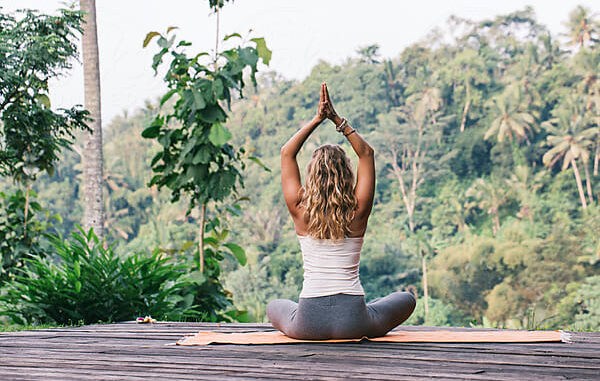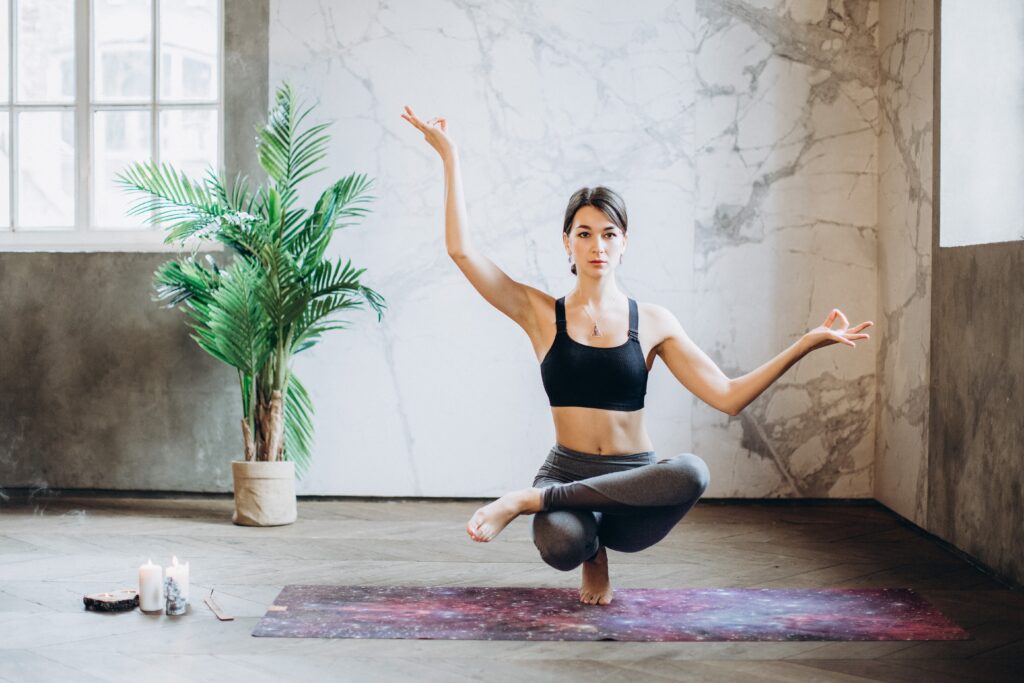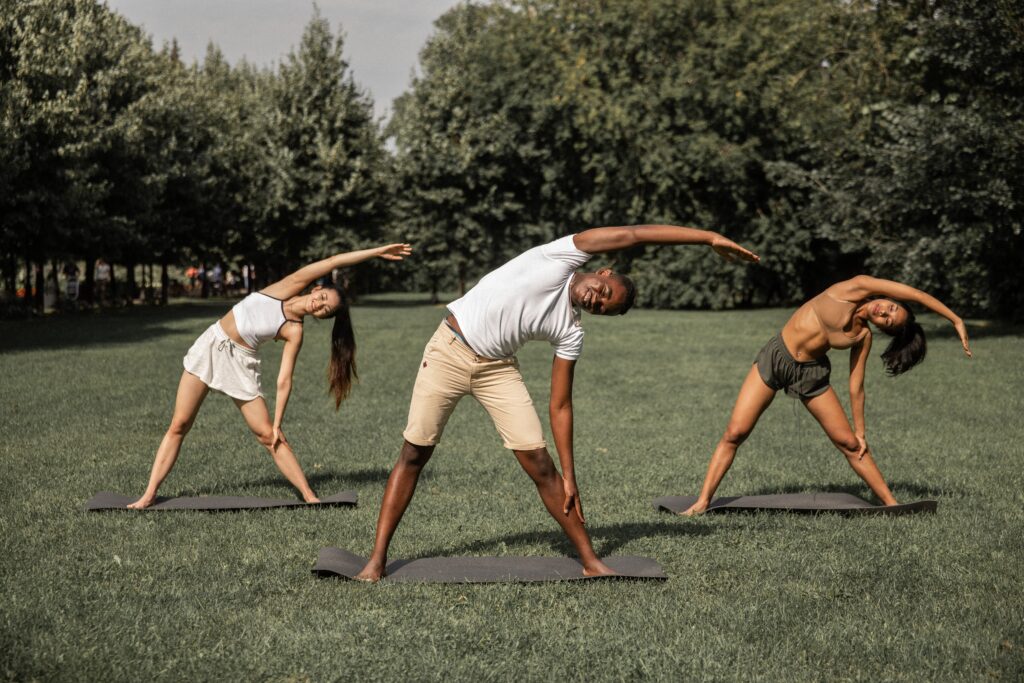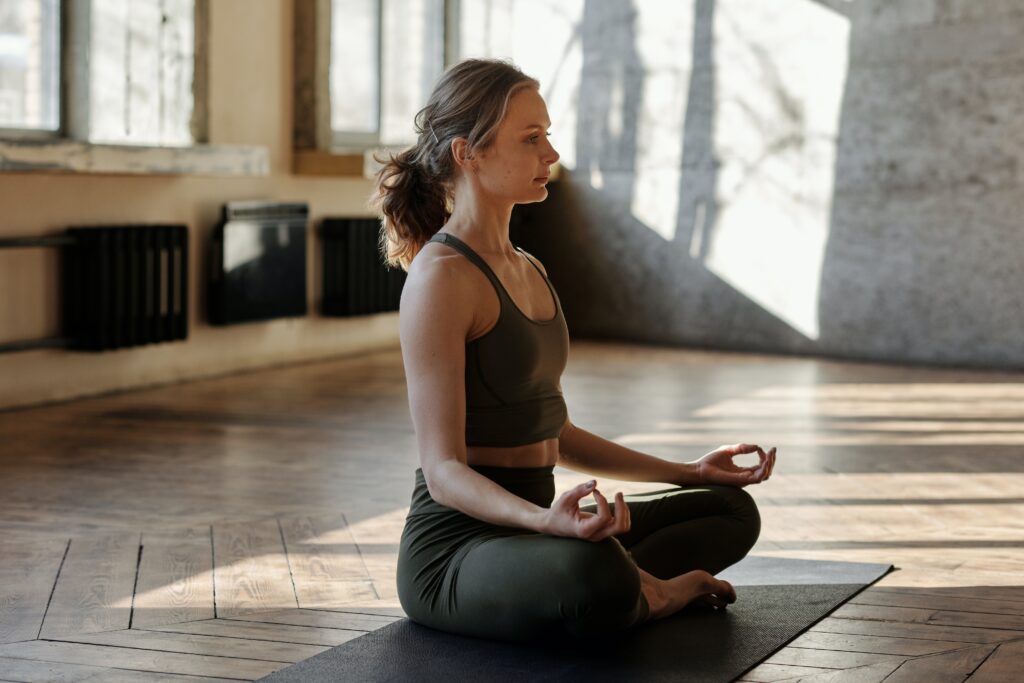
Yoga has been practiced for centuries as a transformative discipline that unites the mind, body, and spirit. It is a journey that goes beyond physical exercise, offering a multitude of health benefits that extend to every aspect of our well-being. In this comprehensive exploration, we will uncover the profound impact of yoga on our physical, mental, and emotional health, empowering you to embrace this ancient practice as a powerful tool for personal growth and vitality.
Yoga is an intricate tapestry of movement, breath, and mindfulness that nurtures our body and soul. With its origins rooted in ancient India, it has evolved into a global phenomenon that resonates with people of all ages and backgrounds. By immersing ourselves in the practice of yoga, we embark on a transformative journey that goes beyond the physical realm, offering a path towards balance, inner peace, and vibrant health.
Section 1: The Essence of Yoga: Mind, Body, and Spirit Integration
Yoga is a profound practice that goes beyond physical exercise. It encompasses the integration of the mind, body, and spirit, creating a harmonious connection that extends to every aspect of our being. In this section, we will delve deep into the essence of yoga, understanding its fundamental principles and the transformative power it holds.
1.1 The Philosophy of Yoga: Exploring the Eight Limbs of Yoga
At the heart of yoga lies a rich philosophy that guides its practice. The ancient sage Patanjali outlined the Eight Limbs of Yoga, known as Ashtanga Yoga, which serve as a roadmap for spiritual growth and self-realization. We will explore each limb, from the ethical guidelines of the Yamas and Niyamas to the physical postures of Asanas and the inner exploration of Pranayama and Meditation.
1.2 Breath and Consciousness: The Union of Pranayama
Breath is the life force that animates our being, and in yoga, it becomes a focal point for cultivating mindfulness and connection. We will delve into the practice of Pranayama, the art of conscious breath control, exploring various techniques that enhance vitality, balance the nervous system, and deepen our connection to the present moment.
1.3 Asanas: The Sacred Geometry of the Body
Asanas, or yoga postures, are the physical expressions of yoga. They not only promote strength, flexibility, and balance but also serve as a gateway to deepening our awareness and cultivating a meditative state of mind. We will explore a range of asanas, from standing poses to inversions, and delve into their physical, energetic, and emotional benefits.
1.4 Moving Meditation: The Flow of Vinyasa
Vinyasa, often referred to as the “flow” of yoga, synchronizes breath with movement, creating a dynamic and meditative practice. We will delve into the art of Vinyasa, understanding its rhythm, sequencing principles, and the transformative effects it has on our physical and mental well-being. Through mindful movement, we can tap into a state of flow and experience a sense of unity within ourselves.
1.5 The Subtle Energy Body: Exploring Chakras and Nadis
Yoga recognizes the existence of subtle energy channels within our bodies, known as nadis, and energy centers called chakras. These aspects of the subtle energy body influence our overall well-being and can be balanced and harmonized through yoga practices. We will explore the chakra system, understand the qualities associated with each chakra, and learn how yoga can activate and balance these energy centers.
1.6 Cultivating Presence: Mindfulness and Meditation
Mindfulness and meditation are integral components of yoga practice, offering us tools to cultivate presence, inner stillness, and heightened self-awareness. We will delve into various meditation techniques, including mindfulness meditation, loving-kindness meditation, and visualization, exploring how they can enhance our focus, reduce stress, and promote emotional well-being.
By understanding the essence of yoga, we can go beyond the physical postures and embrace the holistic nature of this ancient practice. Through the integration of mind, body, and spirit, we unlock a path of self-discovery, personal growth, and profound transformation.
Section 2: Nurturing the Physical Self: Yoga’s Impact on Physical Health
Yoga is widely recognized for its remarkable impact on physical health and well-being. In this section, we will explore how the practice of yoga nurtures the physical self, offering a multitude of benefits that extend far beyond the yoga mat. From increased strength and flexibility to improved posture and enhanced body awareness, yoga provides a holistic approach to physical wellness.
2.1 Strength and Flexibility: Building a Resilient Body
One of the key aspects of yoga is its ability to build strength and enhance flexibility. Through regular practice, individuals can experience noticeable improvements in muscular strength, endurance, and joint mobility. Yoga postures, such as standing poses, balances, and inversions, engage and tone various muscle groups, promoting overall body strength. Additionally, the controlled stretching and lengthening of muscles during yoga helps increase flexibility, allowing for greater range of motion and improved posture.

2.2 Enhancing Balance and Coordination: Finding Stability within Movement
Balance and coordination are essential components of physical well-being, and yoga offers practices that specifically target these areas. Standing balances, such as Tree Pose and Warrior III, require concentration, stability, and mindful alignment, fostering improved balance and coordination over time. Through consistent practice, individuals can enhance their proprioception—the body’s ability to sense its position in space—and develop a heightened sense of body awareness.
2.3 Posture Alignment: Cultivating a Strong and Balanced Frame
The sedentary lifestyle and long hours spent sitting at desks often contribute to poor posture, leading to discomfort and even chronic pain. Yoga addresses this issue by focusing on proper alignment and posture. Through various asanas and mindful movement, individuals can strengthen the core muscles that support the spine and improve alignment, alleviating strain on the back and neck. The cultivation of a strong and balanced frame enhances posture and contributes to overall physical well-being.
2.4 Breath and Vitality: Energizing the Body with Pranayama
Incorporating breathwork, or Pranayama, into yoga practice revitalizes the body and enhances overall vitality. Deep, conscious breathing techniques help oxygenate the blood, improve lung capacity, and boost energy levels. By incorporating specific Pranayama techniques, such as Kapalabhati (skull-shining breath) and Nadi Shodhana (alternate nostril breathing), individuals can invigorate the body, reduce stress, and promote a sense of well-being.
2.5 Stress Reduction and Relaxation: Finding Calm in the Midst of Chaos
The demands of modern life often lead to stress and tension. Yoga offers a sanctuary for individuals to find respite and restore balance. Through gentle stretches, restorative poses, and relaxation techniques, such as Yoga Nidra, individuals can activate the body’s relaxation response, leading to reduced stress levels, improved sleep quality, and enhanced overall relaxation.
2.6 Body-Mind Connection: Fostering Awareness and Self-Appreciation
Yoga encourages individuals to develop a deeper connection with their bodies, fostering an enhanced sense of self-awareness and self-appreciation. By mindfully engaging with the physical sensations experienced during yoga practice, individuals cultivate a greater understanding of their bodies and develop a compassionate relationship with themselves. This body-mind connection extends beyond the yoga mat and can positively impact self-esteem, body image, and overall mental well-being.
By nurturing the physical self through yoga practice, individuals can experience profound transformations in their physical health and well-being. From increased strength and flexibility to improved balance, posture, and vitality, yoga offers a holistic approach to nurturing the physical body.
Section 3: Cultivating Mental Clarity and Emotional Balance through Yoga
Yoga is not just a physical practice; it also holds profound benefits for mental and emotional well-being. In this section, we will delve into the ways in which yoga cultivates mental clarity and emotional balance, providing individuals with powerful tools to navigate the complexities of the mind and emotions.
3.1 Calming the Mind: Finding Stillness within the Chaos
In our fast-paced and often overwhelming lives, finding moments of peace and stillness can be challenging. Yoga offers a sanctuary for individuals to quiet the mind and cultivate inner calm. Through the practice of asanas, pranayama, and meditation, yoga provides tools to calm the mental chatter, reduce anxiety, and promote a sense of tranquility. The intentional focus on breath and mindful movement helps to anchor the mind in the present moment, fostering mental clarity and a deep sense of inner peace.
3.2 Stress Reduction and Emotional Resilience: Nurturing the Mind-Body Connection
Stress is a common experience in our modern world, and it takes a toll on our mental and emotional well-being. Yoga offers effective techniques to manage stress and cultivate emotional resilience. The combination of physical movement, breathwork, and mindfulness in yoga practice helps individuals develop greater self-awareness and self-regulation. Through the release of physical tension and the cultivation of a relaxed state, yoga promotes emotional balance, reduces stress, and enhances overall well-being.
3.3 Emotional Release and Healing: Releasing Stored Tension and Trauma
Unresolved emotions and past traumas can manifest in the body, leading to physical and emotional imbalances. Yoga provides a safe space for individuals to explore and release these stored tensions. Through gentle movement, deep stretches, and mindful breathwork, yoga practice allows emotions to surface and be processed in a supportive environment. This process promotes emotional healing, fosters self-compassion, and paves the way for personal growth and transformation.
3.4 Mindfulness and Self-Awareness: Cultivating Present-Moment Awareness
Yoga encourages the cultivation of mindfulness and self-awareness, enabling individuals to develop a deeper understanding of their thoughts, emotions, and patterns of behavior. Through conscious movement, breath awareness, and meditation, yoga practice enhances present-moment awareness, allowing individuals to observe their experiences without judgment or attachment. This mindfulness practice supports emotional intelligence, improves decision-making skills, and fosters a greater sense of inner harmony and clarity.
3.5 Enhancing Mental Focus and Concentration: Sharpening the Mind’s Abilities
The practice of yoga requires focus and concentration, which translates into improved mental clarity and cognitive abilities off the mat. The intentional engagement with the body and breath during yoga practice trains the mind to be more focused and attentive. This enhanced mental discipline extends into daily life, improving concentration, productivity, and the ability to stay present in the face of distractions.
3.6 Cultivating Positive Mindset and Resilience: Shifting Perspectives and Nurturing Optimism
Yoga fosters a positive mindset and resilience by promoting self-acceptance, gratitude, and positive thinking. Through affirmations, intention setting, and gratitude practices, individuals can shift their perspectives and cultivate a more optimistic outlook on life. The consistent practice of yoga helps individuals develop resilience in the face of challenges, fostering the ability to bounce back from adversity and maintain a positive mindset.
By cultivating mental clarity and emotional balance through yoga practice, individuals can experience profound transformations in their overall well-being. The practice of finding stillness, reducing stress, releasing emotions, cultivating mindfulness, enhancing mental focus, and nurturing a positive mindset all contribute to a healthier and more balanced state of mind.
Section 4: Healing from Within: Yoga as a Therapeutic Practice
Yoga has long been recognized for its therapeutic potential, offering a holistic approach to healing and well-being. In this section, we will explore how yoga serves as a powerful tool for addressing physical, mental, and emotional imbalances, supporting individuals on their healing journey.
4.1 Enhancing Physical Health: The Body’s Innate Healing Power
Yoga serves as a catalyst for physical healing by tapping into the body’s innate wisdom and healing potential. Through the practice of specific asanas (poses), individuals can target areas of the body that require attention, alleviating physical discomfort and promoting overall wellness. Whether it is through gentle stretches, strengthening poses, or restorative postures, yoga helps to improve flexibility, increase circulation, and stimulate the body’s natural healing processes.

4.2 Managing Chronic Conditions: Empowering Self-Care and Pain Management
For individuals living with chronic conditions such as arthritis, back pain, or fibromyalgia, yoga offers a complementary approach to traditional medical treatments. By integrating gentle movements, breathwork, and relaxation techniques, yoga helps individuals manage pain, reduce inflammation, and improve overall quality of life. The practice of self-care and mindfulness cultivated through yoga empowers individuals to take an active role in their health and well-being.
4.3 Mental Health and Emotional Well-being: Harnessing the Therapeutic Potential of Yoga
Yoga holds immense therapeutic potential for mental health and emotional well-being. As a mind-body practice, it offers a safe space for individuals to explore and process their emotions, reduce anxiety, and alleviate symptoms of depression. Through breath-centered movement, meditation, and deep relaxation, yoga helps to regulate the nervous system, promote emotional stability, and enhance overall psychological resilience.
4.4 Trauma-Informed Yoga: Creating Safe and Healing Spaces
For individuals who have experienced trauma, yoga can provide a supportive environment for healing and recovery. Trauma-informed yoga approaches recognize the unique needs of individuals who have experienced trauma and prioritize creating safe and empowering spaces. By incorporating elements of choice, body awareness, and mindfulness, trauma-informed yoga helps individuals reconnect with their bodies, build resilience, and restore a sense of safety and trust.
4.5 Yoga for Sleep and Stress Management: Nurturing Restorative Practices
In our fast-paced and stress-filled lives, sleep and stress management are crucial for overall well-being. Yoga offers a range of practices that promote restful sleep and effective stress management. Gentle yoga sequences, relaxation techniques, and breathing exercises help to calm the mind, release tension, and prepare the body for deep relaxation. By incorporating these restorative practices into daily routines, individuals can experience improved sleep quality and reduced stress levels.
4.6 Yoga as a Complementary Therapy: Integrating with Conventional Medicine
Yoga is increasingly recognized as a valuable complementary therapy that can enhance the effectiveness of conventional medical treatments. Whether it is in the context of cancer care, chronic pain management, or addiction recovery, yoga can be integrated into existing treatment plans to support healing, improve quality of life, and promote overall well-being. The mind-body connection fostered by yoga practice enhances the body’s response to medical interventions and promotes a holistic approach to health.
By embracing yoga as a therapeutic practice, individuals can tap into their body’s inherent healing capacities, address physical ailments, promote mental and emotional well-being, and support their overall healing journey.
Section 5: Embarking on the Yoga Journey: Getting Started and Deepening Your Practice
5.1 Starting Your Yoga Journey: Finding the Right Style and Teacher
Embarking on a yoga journey is an exciting and transformative experience. If you’re new to yoga, it’s important to explore different styles and find the one that resonates with you. From gentle Hatha yoga to dynamic Vinyasa flow or introspective Yin yoga, each style offers a unique approach to movement, breathwork, and meditation. Take your time to experiment and attend different classes to discover what suits you best.
Finding the right yoga teacher is equally crucial. A knowledgeable and compassionate teacher can guide you through proper alignment, offer modifications, and provide valuable insights to enhance your practice. Seek recommendations, read reviews, and consider attending trial classes to find a teacher who creates a safe and supportive environment for your yoga journey.
5.2 Establishing a Regular Practice: Consistency and Commitment
Consistency is key when it comes to reaping the full benefits of yoga. Establishing a regular practice helps you develop strength, flexibility, and mindfulness over time. Set realistic goals for yourself, whether it’s practicing three times a week or dedicating a specific time each day for yoga. Create a dedicated space in your home or find a local yoga studio where you feel comfortable and inspired to practice.
Commitment to your practice extends beyond physical postures. Explore different aspects of yoga, including pranayama (breathwork) and meditation, to deepen your understanding and experience. These elements bring balance, clarity, and a sense of inner calm to your daily life. Remember that yoga is a lifelong journey, and progress comes with patience and dedication.
5.3 Honoring Your Body and Practicing Mindful Awareness
One of the fundamental principles of yoga is honoring your body and practicing mindful awareness. Yoga is not a competitive sport; it’s a personal exploration of self-discovery and self-care. Listen to your body’s needs and respect its limits. Avoid pushing yourself beyond your capabilities or comparing your progress to others. Every body is unique, and each practice is an opportunity to connect with your inner self.
Cultivate mindful awareness during your practice by focusing on the present moment. Pay attention to your breath, sensations, and thoughts as you move through the asanas. Allow yourself to be fully present, embracing the transformative power of yoga in each moment. This awareness extends beyond the mat and into your daily life, enhancing your overall well-being and connection with the world around you.
5.4 Deepening Your Practice: Workshops, Retreats, and Continuing Education
As your yoga journey evolves, you may find yourself seeking opportunities to deepen your practice and expand your knowledge. Workshops, retreats, and continuing education programs offer valuable insights, specialized teachings, and immersive experiences. These opportunities allow you to explore advanced asanas, delve into yogic philosophy, and connect with a wider community of practitioners.
Consider attending workshops and retreats led by experienced teachers or joining yoga teacher training programs if you’re interested in sharing your love for yoga with others. These experiences provide a deeper understanding of the principles and philosophy behind yoga, empowering you to embody the teachings on and off the mat.

5.5 Yoga Off the Mat: Integrating Yoga into Daily Life
Yoga is not confined to the mat; it’s a way of life. Integrating the principles of yoga into your daily routine helps you cultivate mindfulness, balance, and inner peace. Off the mat, practice mindfulness in your interactions, cultivate compassion, and embrace a conscious lifestyle. Take what you learn during your yoga practice and apply it to your relationships, work, and daily activities, fostering a sense of harmony and well-being.
Embrace yoga as a holistic practice that extends beyond the physical. Explore other aspects of yoga, such as Ayurveda (the sister science of yoga), conscious eating, or self-reflection practices. By integrating yoga into all aspects of your life, you create a profound and transformative journey of self-discovery and personal growth.
Embracing the Yoga Lifestyle for Lifelong Well-being
In conclusion, the practice of yoga offers a transformative journey that extends beyond the physical postures and reaches into the depths of our being. By integrating the principles of yoga into our lives, we can experience profound changes in our physical health, mental well-being, and overall sense of purpose and fulfillment.
Yoga teaches us to be present, to listen to our bodies, and to cultivate awareness in every moment. It encourages us to connect with our breath, to find stillness amidst the chaos, and to embrace self-compassion and acceptance. As we embark on this journey, we realize that yoga is not just a series of poses, but a way of life—a philosophy that guides us towards balance, harmony, and inner peace.
By nurturing our physical bodies through yoga, we enhance our strength, flexibility, and vitality. The regular practice of asanas improves our posture, relieves tension and stress, and promotes overall physical well-being. Through breathwork and meditation, we develop mental clarity, focus, and emotional resilience. Yoga becomes a powerful tool for managing stress, anxiety, and other mental health challenges, providing us with the inner strength and stability needed to navigate life’s ups and downs.
But yoga is more than just a personal practice; it is a path towards interconnectedness and unity. As we step onto our mats, we join a global community of practitioners who are dedicated to personal growth, compassion, and the pursuit of a higher consciousness. Together, we create a ripple effect of positive energy and change in the world.
Embracing the yoga lifestyle means extending the principles we learn on the mat into our daily lives. It means practicing mindfulness, compassion, and gratitude in our interactions with others. It means making conscious choices that honor our bodies, our environment, and all living beings. Yoga becomes a way of living with intention, purpose, and integrity.
As you continue on your yoga journey, remember that it is a lifelong practice—a never-ending exploration of self-discovery, growth, and transformation. Be patient with yourself, celebrate your progress, and embrace the process. Every step, every breath, and every moment on your mat brings you closer to your true self.
So, let us embark on this journey together, united by the love for yoga and the desire to live a balanced, fulfilling, and meaningful life. May the teachings of yoga guide us, inspire us, and empower us to create positive change within ourselves and the world around us.

